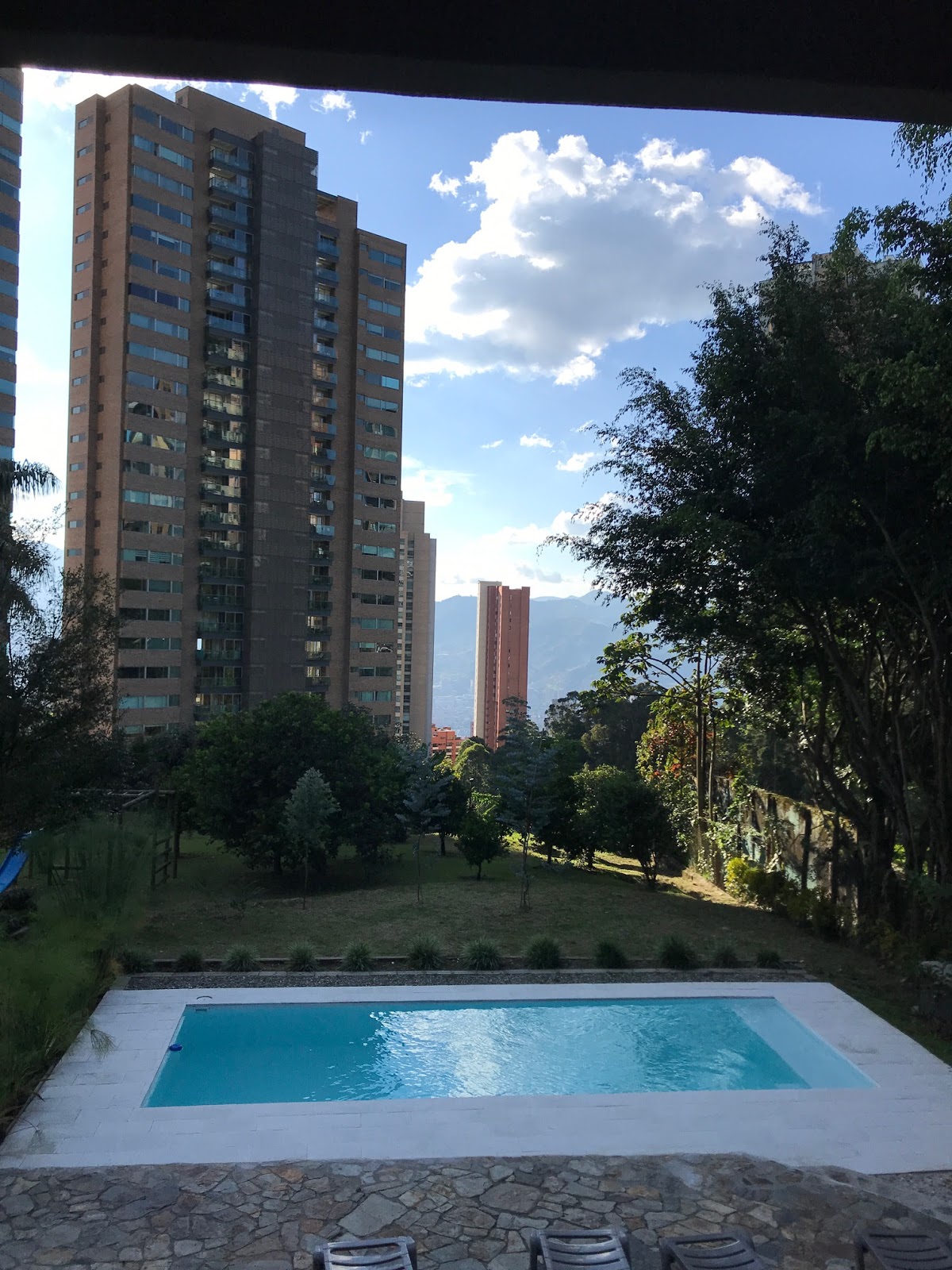How to become a full-time traveler
Traveling full-time sounds sexy as hell, doesn’t it?
It’s a romantic notion, to say the least. You conjure images of warm beaches, blue water, cocktails and adventure. Becoming a full time traveler is indeed sexy as hell.
All these things are true, which is why we’ve been doing it for years now. I’m currently writing this article from my mansion in Medellin.
Seriously. You want some FOMO? I have all my meals prepared, laundry service, and I work from a hammock when I’m bored of the view from the kitchen table. And when even that doesn’t satisfy, I watch movies in our home movie theater.
Oh, and I get to drink beer with my best friends every night…
But what you’re not seeing in my awesome Instagram stories is all the planning and work that goes into sustaining this kind of lifestyle.
Read, chores.
In reality, it was a ton of boring stuff that makes the awesome stuff possible, and sustainable.
So I’m not actually here to give you FOMO. Rather, I’m here to show to guide you on the path to becoming a full-time traveler. And you surely don’t need a travel agent to do it!
And as you read through this list, keep in mind, everyone is in a different situation, so you’ll need to take the bits and pieces of this guide that apply to you.
With that, let’s jump into step number one…
Step 1: Figure out your income
Heads up, y’all, this is generally where people give up their dream of traveling full-time.
They start telling themselves something false like, “Only celebrities and Instagram influencers have the types of jobs that let you travel.”
I’m here to tell you right now, that’s crap. Check out some of the careers I’ve seen people holding down while traveling:
-
Brain surgeon (yup!)
-
SEO experts (me)
-
Professional fire dancer
-
Yoga instructor
-
Amazon decor distributor (Live, laugh, love stuff)
-
Travel photography and travel blogger
-
Biotech researcher
-
Lawyer-turned full time RVer (van life)
-
Travel photographer
-
Travel blogging expert
But the jobs aren’t all obscure like these – this was just meant to show you how wide the range of careers can be.
We’ve also put together a list of the most common careers we run into while traveling (so that you don’t have to try to become a remote brain surgeon). But rather redoing all my work here, just download the ebook and check it out for yourself.
The one thing every digital nomad, of every background had in common was this: They tried.
They simply asked their boss, switched to a job that let them travel, or created a company that let them travel full-time.
They took the leap.
Now I don’t have a direct path to revenue for you specifically. That would be impossible. But both my friends Marisa and Diego created a course specifically to help people cover step 1.
Whether or not you decide to take that course doesn’t matter to me, because my goal is to give you as much free stuff in this guide as possible.
So If you can’t afford the course, and still have questions at the end of this guide, send me a note at hello@beachcommute.com. I’ll give you a hand.
Step 2: Figure out your home base situation
Most people don’t jump straight into full-time traveler mode. They usually dip their toes in the water by going on extended work trips, sabbaticals, or mini-vacations.
But eventually (once you inevitably realize you can’t go back to normal life!) you’re going to need to work out exactly how much you want to travel so that you can plan accordingly.
Do you want to travel 1 month a year? Three? Six? Full-time?
For me, it’s about six months a year. Like a lot of my nomad friends, I like to have a home base to recharge. Also, and most importantly, I need a home for my dog Charley.

So let’s talk about a few solutions we’ve seen when it comes to choosing a home base status. We will break the options down into a couple categories for people who want to go full nomad and those who want to go partial, like me.
Full nomad
If you’ve decided to go full-nomad, there’s not much to do other than figuring out where to store your stuff (If you even decide to keep any stuff).
Or, if you’re a homeowner, you’ll decide whether or not to rent your place full-time to maximize your passive income, or to use Airbnb for intermittent rental income while you travel part-time.
I’ve met people who rent their homes on Airbnb intermittently when they travel, and it completely covers their mortgage along with their travel expenses while traveling. If you own a home, strongly consider this option because it gives you a ton of flexibility.
Pros:
-
You have the utmost freedom to choose where you want to live at the drop of a hat.
-
Zero long-term obligations.
-
You may benefit greatly from tax incentives.
Cons:
-
Full-time travel can get exhausting. Waking up in an unusual place every couple weeks can be disorienting and draining.
-
If you don’t plan well, it can get insanely expensive.
QUICK TIPS:
Most of our friends who go full nomad will take advantage of the tax benefits of not living in their home country. For example, US citizens can file the FEIE which will exclude the first $108,700 of income they earn.
Most full nomads will stay with friends and/or family when they visit home if they don’t own property.
Partial Nomad
I consider anyone who is paying regular rent (not travel rent), or spends at least 50% of their time at a “home base” as a “Partial Nomad”. Partial Nomads usually have some sort of responsibility that keeps them at home part time, or, they just like having a place to recharge after long periods of travel.
Some people, like me, have a dog, or cat that will keep them returning home frequently. I spend anywhere between 25-50% of my time at “home”.
Pros:
-
You always have a place to recharge when traveling beats you up.
-
You won’t have to live with your family when you visit for the holidays.
-
You can keep a pet, provided that you have someone to regularly house sit for you.
Cons:
-
Unless you own your property, you’re usually going to be paying double rent when you’re on the road, limiting your travel options due to budget.
-
If you have responsibilities at home, you won’t have full travel freedom.
QUICK TIPS:
If you’re going to rent a home base rather than buy… Get. A. Roommate. You will save a ton of money and it will soften the blow when you return to an empty house after spending months with friends.
It’s unlikely, but if you’re able to snag a place that lets you sublet on AirBnb or otherwise, do it.
When it comes down to it, the only two things you need to consider are the depth of your responsibilities at “home” (like a dog, or family), and whether or not you want a place to recharge for a few months.
They’re enormous considerations, to be certain, but all your doubts do fit neatly into these two buckets.
Step 3: Make a list of your target destinations
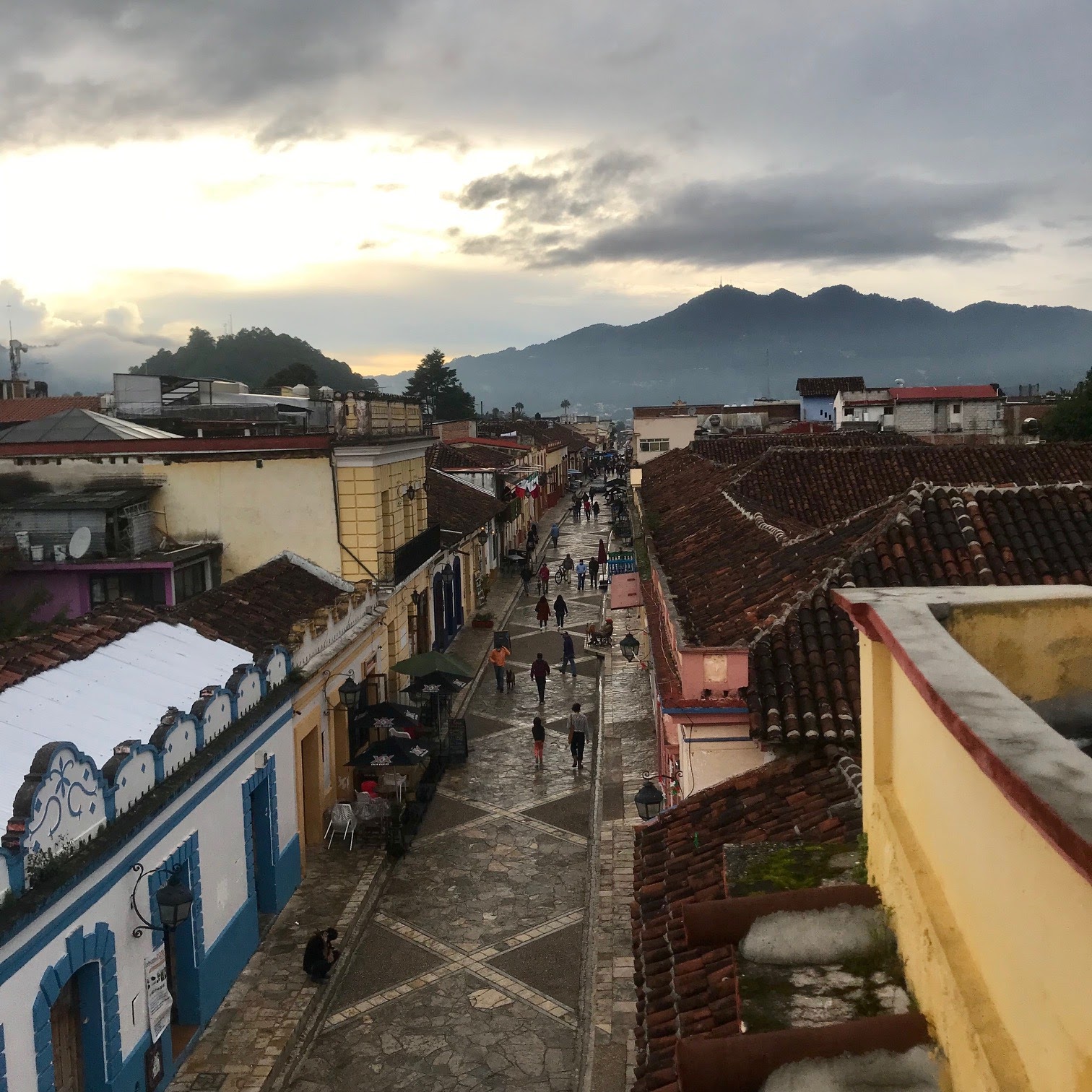
Let’s take a few minutes to talk about the fun stuff: Where to go.
I’m going to break this section down into two simple areas:
- The main things you need to look for (and look out for) in a first destination.
- Three specific places I would recommend to start your journey
Let’s start with a few tips on how to choose your first destination.
1. Ease of language
There are few things more nerve wracking than getting lost after a flight at 4am in an unfamiliar city, and you’re incapable of communicating with the locals.
While it’s GREAT to get yourself out of your comfort zone and truly embrace cultures that are starkly different from your own, you need to pick your spots. And your first remote working experience should be as stress-free as possible – you’ll have enough on your plate, trust me.
I would recommend that you either choose a country that speaks a language you’re comfortable with (or can at least navigate), or you bone up on the local language prior to traveling. Try one of the following tools to get your feet underneath you:
2. Affordability
The first thing everyone wants to do is go to the beach…or Europe. Or both.
Don’t get me wrong, traveling to the right beaches and the right countries in Europe can be affordable…
But oftentimes people find out that traveling full-time quickly exceeds their budget, especially in premium locations.
And it’s never the individual daily things that sneak up on you, but rather the aggregate cost of living that burns up your bank account. You need to be cognizant of how much the little things you take for granted are going to cost you over the period of a month, like:
- Salads that suddenly cost $19 for some reason.
- Weekly AirBnbs that charge you surprise booking and cleaning fees.
- Ubers, because you don’t know how to navigate a new city.
- Cocktails because you’re having fun.
There’s a misnomer that “being a minimalist ” and “having no home base” is a cheaper way to live.
That’s definitely not the case in most instances. Oftentimes, it’s even more expensive than your previous life living at home if you haven’t done your due diligence.
To help you get started, I created this infographic of the cheapest destinations in Europe, Central America and South America.

QUICK TIPS:
Also figure out how easy it will be to find accommodations prior to arriving at your destination. Are there sufficient Airbnb options? What does the hotel situation look like? There have been plenty of situations where I came to find out that a certain destination I had arrived at had very few accommodation options up to my minimum standards.
3. Ease of working
I go into painstaking detail in this article about the importance of good wifi, so I’ll spare you the lecture here. But in short, your first destination should have killer wifi.
Make sure you do your research; look up local city wifi speeds and get speed tests from the hosts of your accommodations. And definitely read that article, because I have tons of tips
Three places you should consider starting with
With each of the three factors above in mind, I’ve put together a short list of three places you could seamlessly slip right into with few issues. I’ve lived in each of these places, so don’t shy away from shooting me a note with any questions.
1. Medellin Colombia
Look, your family is going to freak out because they just finished binging Narcos on Netflix. They’re imagining drug lords shooting random people in the streets, cocaine raining from the sky, and their precious child caught in the middle of it all.
It’s not that. That’s history, and that’s Hollywood.
In reality, Medellin is one of the easiest places to live for an expat. Imagine the perfect combination of an extremely low cost of living, first world amenities (like great wifi), perfect weather, tons of fun, and everything a short walk or Uber away.
Also, there are tons of local attractions and places to visit that will blow your mind.
Local attractions:
Pablo Escobar tour
I’m going to come right out and say “Use caution doing this tour.” To many locals it’s offensive as they don’t want to associate themselves with that part of their history. Colombia is vastly different from the madness of the 80’s and 90’s when Escobar kept the country hostage.
While spending money on local tour guides working hard to provide for their families is indeed a good thing, you’ll find that a large number of Colombians regard the tour as distasteful.
Salento
Salento is an AWESOME town about an hour’s flight from the MDE airport. You’ll find colonial-style buildings, cobblestone streets, traditional restaurants with fresh trout delicacies, coffee tours, and Jeep trips to the Valle de Cocoras.

Oh, and you can also play a local game called Tejo, which involves throwing a rock at small packets of gunpowder. It’s a must.

True story: Our cofounder Diego actually cried in Salento, overwhelmed by happiness.
QUICK TIPS: There is a hundred year old espresso machine in a cafe that you need to see. It’s probably four feet tall, takes twenty minutes to warm up, and makes some serious John Wayne coffee. You could put a spoon in it and it would stick straight up in the air.
Paragliding
For the adrenaline junky readers, you’re not going to want to miss paragliding in Cocorna. I took a tour with a company called Freak’n Creek’n that started with paragliding and ended with white water rafting through what I can best describe as “Jurassic Park in real life.” There’s also a place right in Medellin aptly named Medellin Paragliding, giving you the opportunity to get a bird’s eye view of the city.

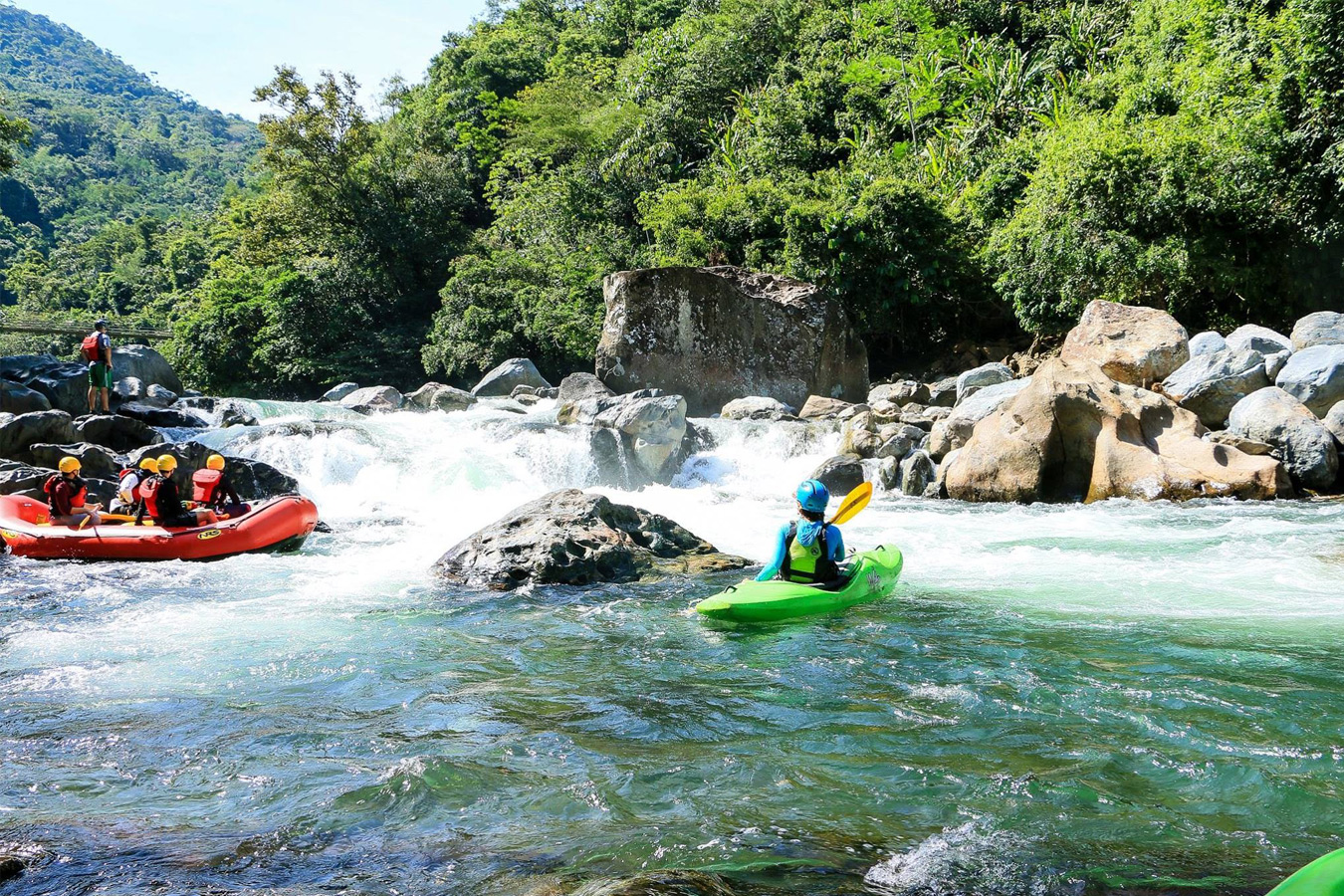
Sky Hammock tours
Not for the squeamish at heart, the sky hammock tours are literally what they sound like: laying in a hammock in the sky.
You’ll crawl along a zipline to the middle of an enormous gorge, slip into a hammock, and pretend not to have a fear-cry.

(And if you need incentive, you get to have a beer at the bar if you make it to the other side.)
Guatape
Guatape is an enormous lake west of Medellin. If you’re in the market for the most beautiful lake view from your own private finca, this is the place for you. And, if you’re also in the market for throwing a huge group party, this is also the place for you.
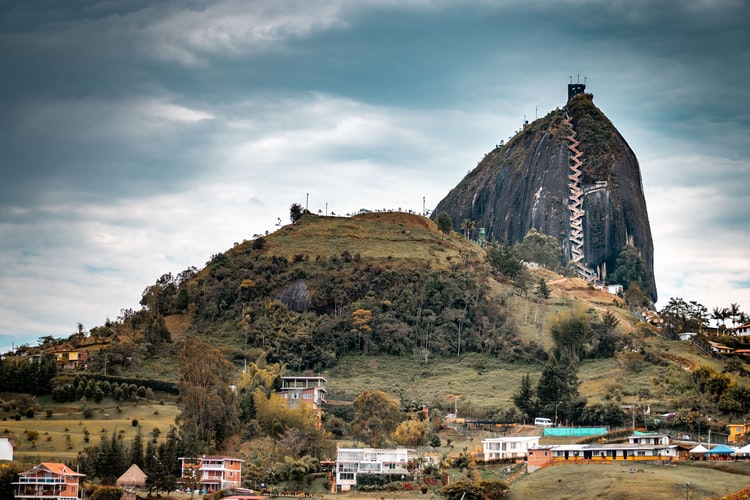
PRO TIPS: Go to the rock of Penol and climb the hundreds of steps to the top and order a michelada. You earned it.
Medellin Average city wifi speed: Here’s the kicker: You’re in a developing country with a developed country’s wifi speed. I regularly get 20-100mbps in downtown Poblado.
Cost of living: Medellin might be one of the least expensive places you will find. According to Numbeo, you can expect to pay some of the prices below:
-
$22.38 for a three course meal for two.
-
$1.12 for a domestic beer.
-
$1.21 for a cappuccino.
-
$298 monthly rent in the city center.
-
$21.05 for a monthly fitness club membership.
FINAL PRO TIPS: There are a few small details that will help with your first trip to Medellin.
Stay in El Poblado. It’s where all the action is, and is easily the nicest area.
Watch your pockets. While Poblado is generally safe, there is some opportunistic crime. People will take your phone if you’re waving it around. The local saying is “No dar papaya”, which means “Don’t get taken advantage of.”
2. Mexico City, Mexico
Similar to Medellin, you’re going to be dodging a lot of naysayer comments about Mexico being unsafe. Trust me when I tell you they don’t know what they’re talking about.
Sure, if you go to the crime capitals of Mexico you’re going to see some things you wish you didn’t. But you’re not going to the crime capitals of Mexico, just like you wouldn’t go to the crime capitals of any country.
Mexico City is absolutely beautiful, with easy access to every amenity you could ask for.
Local attractions:
Condesa neighborhood
Mexico City is enormous; it can take hours to get from one side to the other depending on the traffic. And the fun part is that each neighborhood has its own look and feel to it.
My favorite neighborhood is Condesa. It’s full of trendy bars and restaurants, safe, and is built around an enormous park that is landscaped within an inch of perfection. You would think it was created for the World’s Fair.
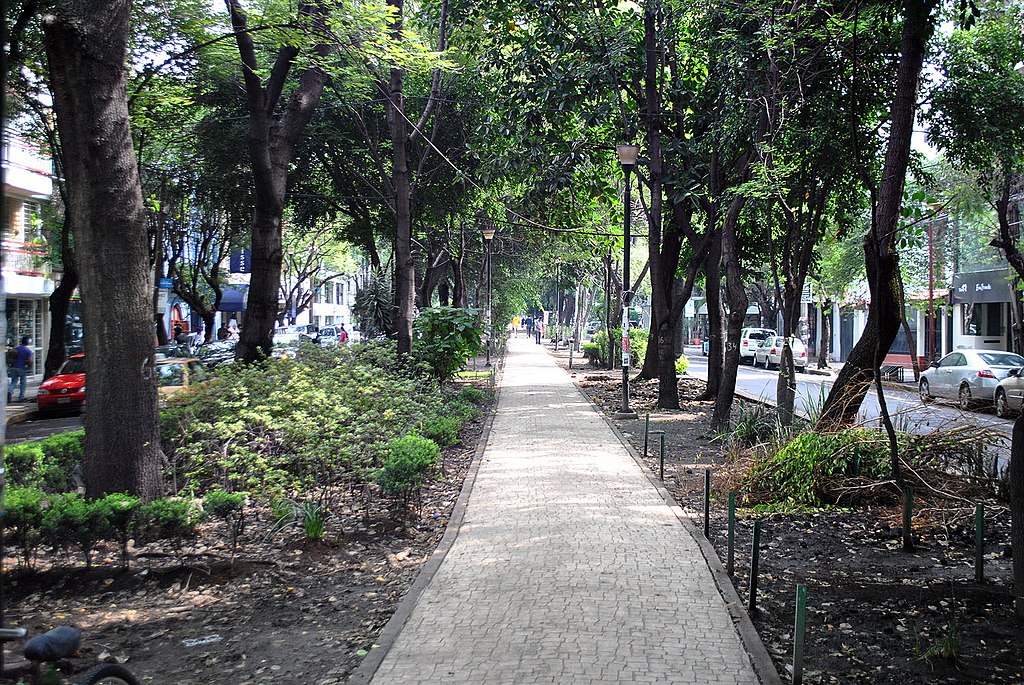

And for the dog lovers out there, Condesa practically has a greater population of canines than humans, which can be found in two enormous dog parks in the center of the main park.

Polanco
Mexico City is basically a huge collection of local-feeling neighborhoods, each with their own unique atmosphere and features. Polanco is one of the neighborhoods you need to visit, and in particular, the bar and restaurant scene.
Roma Norte
For those of you looking for a taste of hipster-ish North America, home is only Roma Norte away. With easy and quality housing, amazing culinary features, and a safe “home-feel”, spend a few days in Roma Norte.
Bars and restaurants
Pujol: Perhaps most importantly saved for last, Mexico City is very well known for its culinary scene. I highly recommend having dinner in Pujol, ranked the 5th best restaurant in Mexico and the 12th best in all of North America. (Wallstreet Journal actually ranks Pujol as the best in Mexico City, but who’s counting?) Our tasting menu was innovative, surprising, and delicious.
Gin Gin: Are you in the market for awesome cocktails, great food and hookah? Check out one of Gin Gin’s multiple locations throughout Mexico City and prepare for an awesome night.

Average city wifi speed: Likely even better than Medellin, you’ll be in a fully-developed city with wifi speeds you would expect from a developed city. Most Airbnbs featured wifi speeds of at least 50+ Mbps. Nomadlist has Mexico City at a 20 Mbps average.
Cost of living: While being wildly more cost-effective than anywhere else in North America, you’ll find the prices are nearly double that of Medellin:
-
$39.43 for a three course meal for two.
-
$1.85 for a domestic beer.
-
$2.24 for a cappuccino.
-
$634 monthly rent in the city center.
-
$51.64 for a monthly fitness club membership.
FINAL PRO TIPS: I have a few suggestions to make your stay in Mexico City more enjoyable.
Stay in Condesa or Roma Norte. While Polanco is highly recommended, it’s better for a night trip than full-time living.
Download the Rappi app (also applies to Medellin). Rappi is a delivery service that will bring you anything you need, from anywhere. I’m not kidding, they will even go to the ATM for you.
3. San Cristobal de las Casas, Mexico
This is an insider tip; you’re not going to find San Cristobal on any lists because it’s an absolute hidden gem. You NEED to get in while the getting is still good, before the secret slips out to the rest of the digital nomad community.
You’ll find the cheapest prices, nice people, great food, good wifi, and tons of adventures all around the city.
If there is any way to describe San Cristobal to a digital nomad, it would be with one word: Easy. Easy accommodations, easy access to internet, easy cost of living, easy walkability, easy access to attractions, and easy weather (if that’s a thing).
Local attractions:
La Cascada del Arbol de Navidad
Just outside San Cristobal you can take a boat ride down the Canon de Sumidero which looks like a scene straight out of a Lord of the Rings movie. You’ll be see monkeys swinging through the trees, alligators bathing on the banks, and at the end, a mind-boggling waterfall that has created “shelves” of mineral deposits that look just like a Christmas tree.
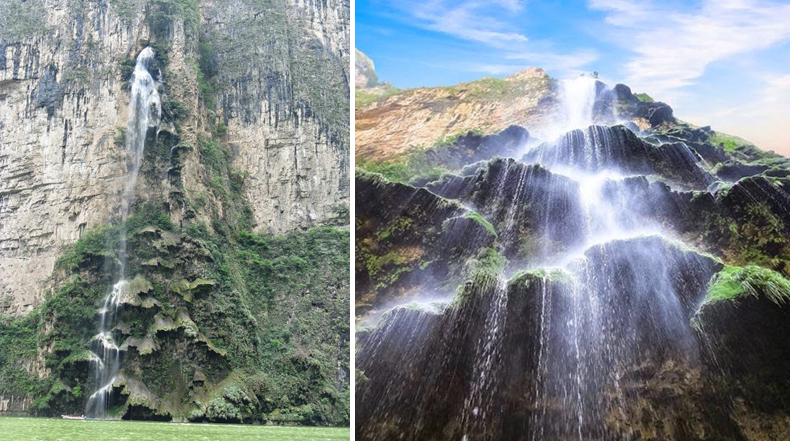
Las Tres Tzimoleras
Our trip to Las Tres Tzimoloreras ranks in my top ten adventures of all time. No joke.
The trip starts with a four-wheel drive ride in the back of a truck across the mountainside. You can take in the sights, or like we did, drink beer and blast George Thorogood.

Eventually you will arrive at a camp that sits right in front of the second waterfall, the one you will rappel down.
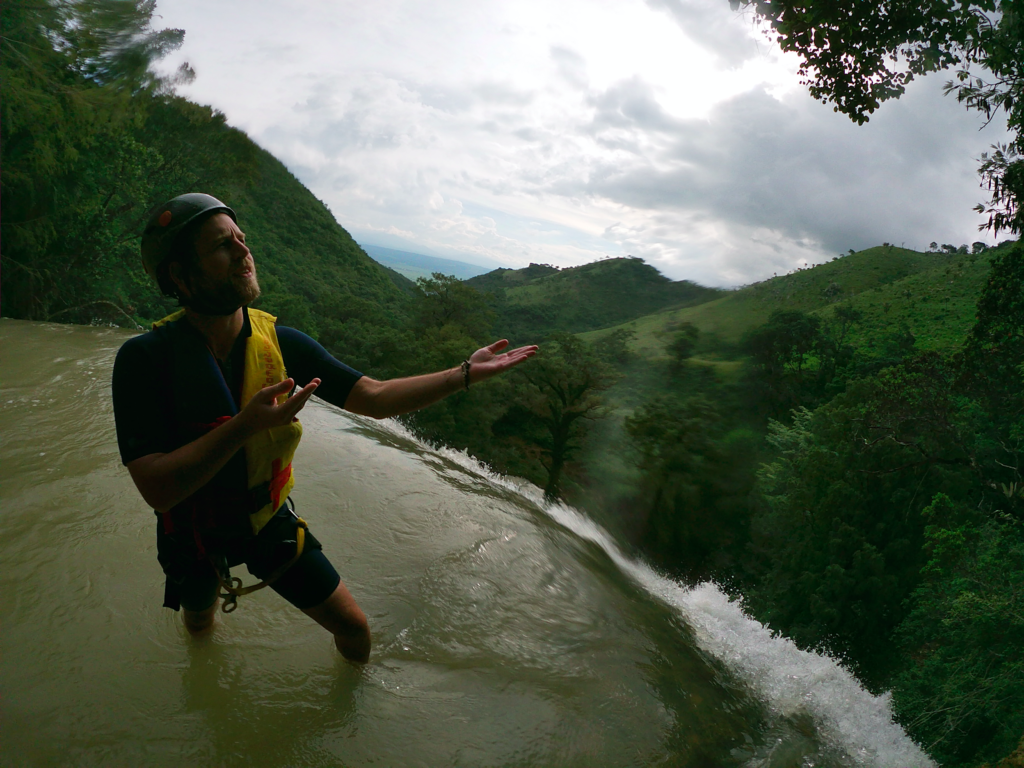
After a day full of rock jumping, cave climbing, and rappelling down a 120 foot waterfall, the guides set up a tent and cook you dinner. It’s an all-inclusive adrenaline rush that you absolutely cannot miss.
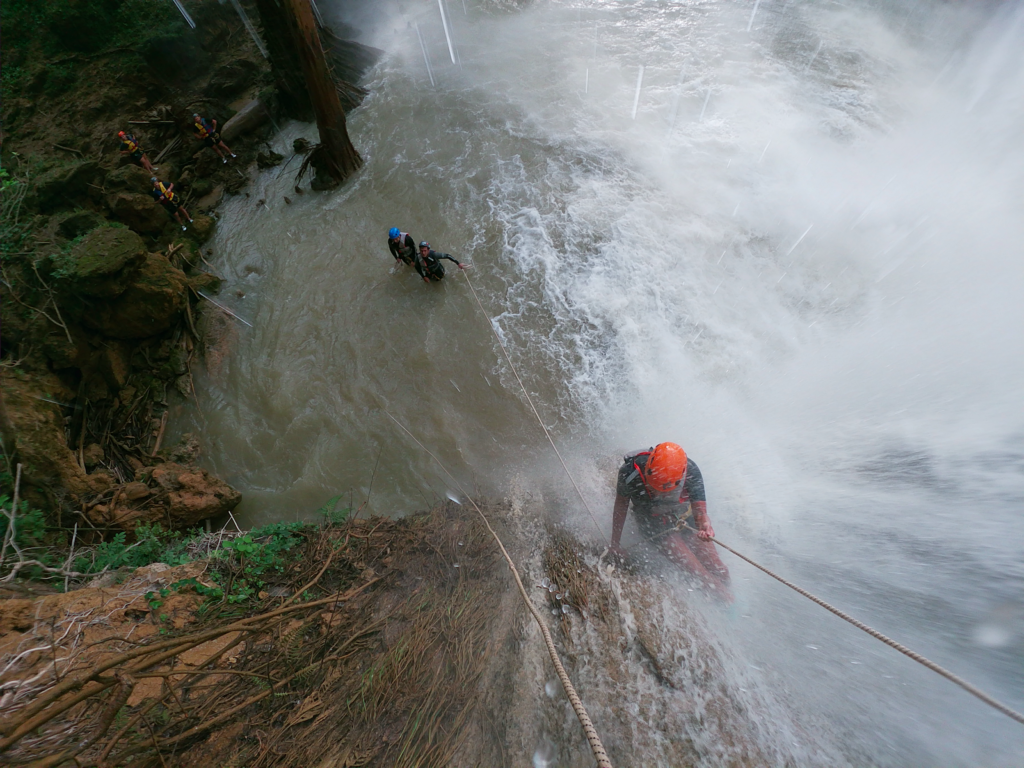
Bars and restaurants
Xocol-Na Chocolate and Churros
I still wake up at night dreaming about Xocol-Na, and their deep-fried churros with dulce de leche and chocolate sauce. You don’t even have to be a fan of churros to enjoy La Churreria, you just have to be a fan of food.
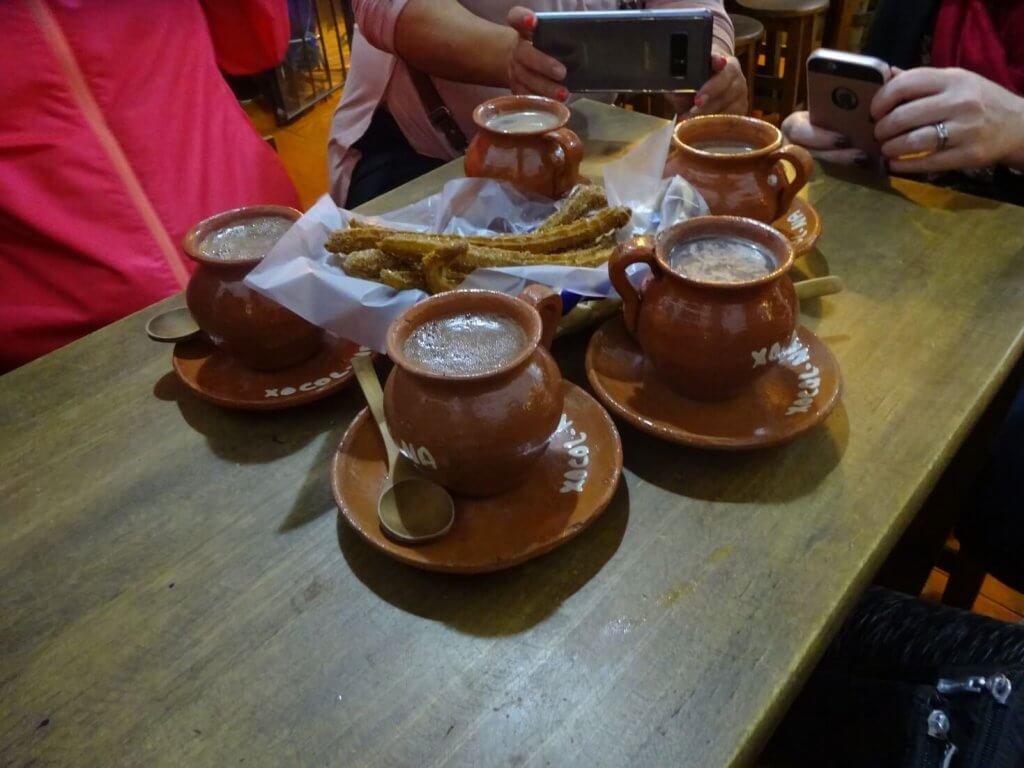
La Posheria
San Cristobal is one of the major cities in the Mexican state of Chiapas, which is well known for its pox. Pox is spirit made from corn, similar to what Americans would call Moonshine. And the very best place to get local pox is from La Posheria, an unassuming little bar that can accommodate maybe six people at capacity.
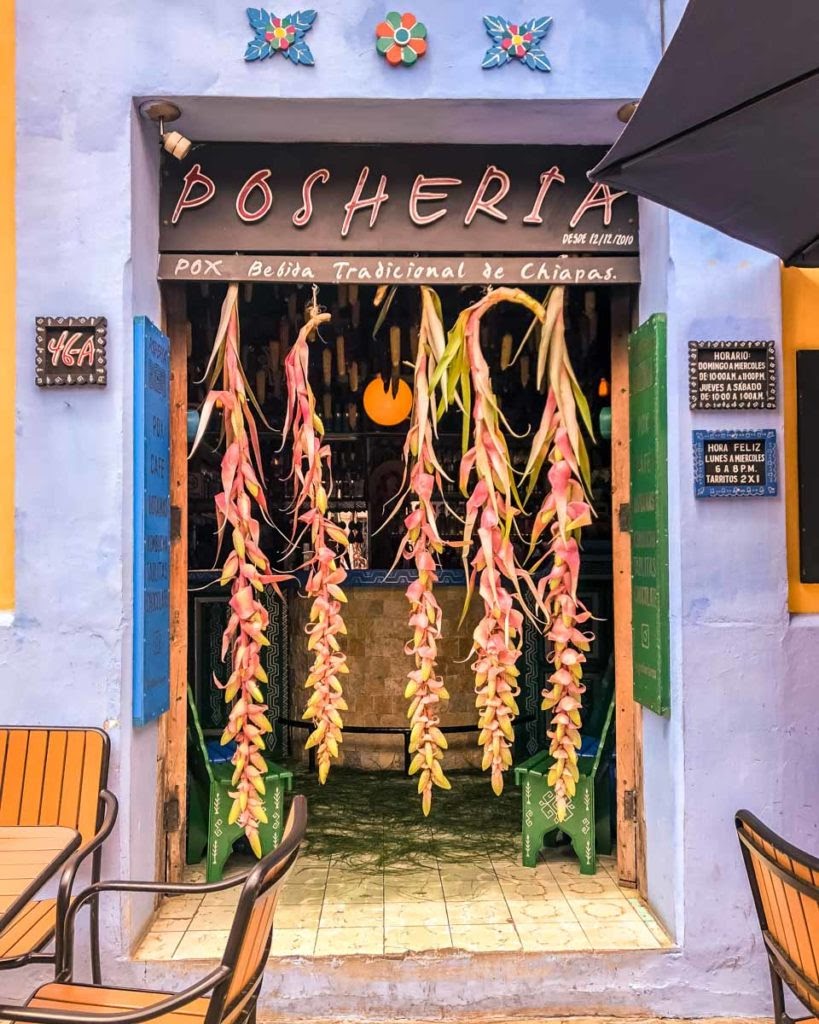
Make sure you taste the flavored liquor poxes -especially the mora and cafe – along with the two traditional varieties they have available.
Casa Lum, Cocoliche, and Hotel Bo
If you only went to these three restaurants during your entire stay, it wouldn’t have been a wasted time. Go to Hotel Bo for their amazing breakfast, Casa Lum for lunch and a cocktail, and Cocoliche for some dinner.
Coworking
Worried about the slower wifi speeds throughout the city? Fear not, there is a coworking space called Centralita ideally situated in the middle of the city. You’ll find a quiet atmosphere, fast internet, and conference rooms for calls. It will run you about ~$4/day.

Average city wifi speed: Nomadlist has San Cristobal at a 24 Mbps average download speed, but I wouldn’t trust it. After having lived there, I can promise you will find wildly ranging speeds depending on where you stay. The only guarantee is the fst speeds at Centralita.
Cost of living: San Cristobal is one of the most cost-effective places you will ever find, just check out these prices:
-
$12.31 for a three course meal for two.
-
$1.48 for a domestic beer.
-
$1.39 for a cappuccino.
-
$190 monthly rent in the city center.
-
$44.30 for a monthly fitness club membership.
FINAL PRO TIPS: It would be very, very difficult to have a hard time in San Cristobal, so if I’m nitpicking….
Stay somewhere downtown – you won’t find anything unaffordable, and it’s all walkable.
Pull out plenty of cash, and preferably small bills (they don’t always appreciate breaking large bills for a small purchase).
Step 4: Get a Travel Credit Card
There are treasure troves of information about picking the perfect credit card, so I’m not going to get anywhere near the level of nuance that you can find elsewhere. I will, however, make a simple recommendation from experience: Most of the digital nomads I know use the Chase Sapphire Reserve card.

It’s the heavy, metallic one you see people proudly throw on the table after an expensive dinner.
There’s a reason we all have it. Let me run you through the basics:
-
You get $250 per year in travel credits (free money).
-
You get massive points for travel-related purchases.
-
You get Priority Pass lounge access.
Let me explain a few of these things in more detail so that you know exactly what you’re getting into.
The card costs $550 to use. Pricey. But as a digital nomad, you’ll use that first $250 credit within the first three months, I promise.
You will rack up points like crazy. I have $900 in redeemable travel points in just a year-and-a-half, and it costs me absolutely nothing because I pay off my balance the day after it goes on the card.
Lastly, and most importantly, you get Priority Pass, which is access to VIP lounges in airports. Trust me when I tell you that you want this. You get to eat and drink for free. And sit in comfortable seats. And enjoy free cocktails at the bar. You WILL get your $550 fee’s worth in the lounges alone.
Travel tip: Pay off your card as soon as you incur expenses. Most people lose the credit card game by holding a balance and paying high interest fees.
Step 5: Book Flights Like a Pro
There is absolutely an art to booking flights. I’ve got friends who can sit down for hours explaining the nuances of tracking down the most value possible, and while I’m not quite on their level, I do have a few tips to steer you in the right direction.
1. Use a flight tracking tool
Weird stuff happens with flights all the time, whether it be a global drop in jet fuel prices, a sudden decrease in demand, or a simple accident, there are short-term deals to be found. Any of the following tools can help find you the best deal.
Google flight alerts
It’s certainly not the most sexy tool, but Google Flights does a damned good job of sorting through the best deals and giving you and idea of whether or not you’re paying too much for a flight.

Further, you can set “enable alerts” which will send email updates on price changes for your selected flights.
Hopper
Similar to Google Flights, Hopper specializes in finding and alerting you of the best deals available. It also gives great advice on the best timing to purchase your flights to maximize your value.

Where Hopper really excels is with its immediate notification system. While Google Alerts will send you daily updates, Hopper will alert you right when a deal comes to life.
A few years back I was looking for direct flights to Germany, all at prices near $900. For a few hours the prices dropped to $530, which Hopper clued me in on. I immediately bought a ticket and saved over $300.
Scott’s Cheap Flights
While Hopper does a great deal of alerting you when flight prices drop, the people at Scott’s literally track down the most insane deals available to various destinations. You may not find the exact flight you’re looking for, but you’ll certainly find inspiration on a budget.

2. Consider One-Way Flights
When I first started traveling I automatically assumed I should book round trip tickets. It makes sense, right? You go and you come back, duh.
But what’s more likely to happen is you will go somewhere, have so much fun that you don’t want to leave, and you’ll end up missing your return flight.
Or equally likely, one of your friends will have an idea to go somewhere else for another [fill in the blank] weeks, and you’ll again miss your return flight.
I exclusively buy one-way tickets so I have the flexibility to choose where and when I want to return home.
PRO TIPS: Use your new credit card on all flights – travel expenses generate the most points.
3. Find Travel Companions
You’ve probably read a lot of the pros and cons of being a digital nomad on a travel blog or social media account at this point, and undoubtedly you’ve come across the biggest con: Loneliness.
While the adventure of meeting new people and galavanting through new cities is soul-enriching and wonderful, it can get very lonely in a quick hurry. There’s a reason people always list “Loneliness” as the biggest drawback to this lifestyle.
A great way to avoid loneliness is by finding people you can travel with in a co-living type of environment. Typically I like to “Slow travel” for a few months at a time with a handful of friends, living in various Airbnbs.
PRO TIPS: I found all of my travel friends from Wifi Tribe, which is an awesome co-living travel community comprised of some of the most inspiring and wonderful people you can imagine.
Conclusion
If you’ve made it this far, you can clearly see that becoming a full-time traveler is no decision to be taken lightly. Your finances, social life, investments, and cost of living will all be impacted. And that’s true whether you decide to do this part time, or embrace full time travel.
But, the payoff cannot be understated. The freedom that you feel, and the sights and culture you experience, are unparalleled. Once you’ve had a taste of this world, there is no putting the toothpaste back in the tube.

